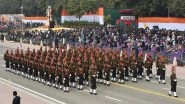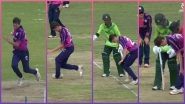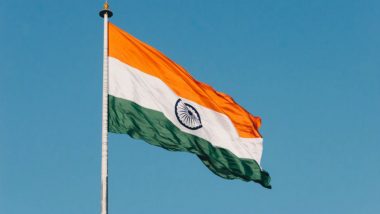India celebrates its 73rd year of Independence on August 15, 2019. On this day, the tricolour is unfurled as a symbolic reminder of the county’s freedom from British imperialism. Growing up in India, some of the best memories of Independence Day celebrations is waking up in the morning and heading out for flag hoisting ceremony. A sense of pride fills us seeing the tricolour unfurled to the tune of patriotic songs in the background. The national flag, called the tricolour or the tiranga, is a matter of national pride and aspiration. But did you know there is a proper protocol in place to hoist the Indian national flag? The Ministry of Home Affairs has in place a Flag Code of India meant to preserve the integrity and respect for the tricolour. Evolution of the Indian National Flag Tiranga From 1906 to 1947 (Watch Video).
The national flag of India is ideally made of hand-spun and hand-woven wool, cotton, silk or khadi fabric. It is rectangular in shape and it’s the ratio of length to height is 3:2. With the ratio in mind, there are nine sizes of the Indian flag. Significance and History of the Tricolour or Tiranga, India's National Flag.
| Flag Size No. | Dimensions in mm |
| 1 | 6300 X 4200 |
| 2 | 3600 X 2400 |
| 3 | 2700 X 1800 |
| 4 | 1800 X 1200 |
| 5 | 1350 X 900 |
| 6 | 900 X 600 |
| 7 | 450 X 300 |
| 8 | 225 X 150 |
| 9 | 150 X 100 |
How to Hoist the Indian National Flag
On occasions like Independence Day and Republic Day, the national flag of India is hoisted in educational and governmental institutions. Here’s a model set of instructions to hoist the tricolour correctly.
• When the Flag is flown, it should occupy the position of honour and should be placed in such a manner.
• Where it’s customary to hoist the Flag on a building, it will be flown on all days, including Sundays and public holidays. It will be flown from sunrise to sunset irrespective of weather conditions.
• The Flag should be positioned with the saffron band on top and the green band at the bottom.
• The Flag should not be in a dishevelled condition.
• It cannot be torn, damaged or disrespected in any manner.
• The Flag should not be stuffed with sweets, flowers or confetti while unfurling.
• The Flag should never be hoisted at half pole.
• The Flag should never touch the ground or trail in water.
• The flag should be hoisted at a fast pace but lowered slowly.
• Hoisting and lowering of the Flag should be done as bugle sounds play.
• Everyone should face the flag while it is being hoisted.
• People should stand in attention when the flag is hoisted.
• People should sing the national anthem when the flag is hoisted.
• No other flag should fly higher than the Indian flag or placed side-by-side.
• The Flag should be taken down in the evening.
• Once the flag is taken down, it should be folded and kept in a wooden box.
The Indian flag is a representation of our national pride. Bringing any kind of disrespect to the Flag is akin to disrespecting the nation. While hoisting or lowering, every citizen of India should show their utmost respect to the Flag on Independence Day. It’s the least the nation expects from its people, considering how many have laid their lives down for the tricolour.
(The above story first appeared on LatestLY on Aug 13, 2019 05:20 PM IST. For more news and updates on politics, world, sports, entertainment and lifestyle, log on to our website latestly.com).













 Quickly
Quickly


